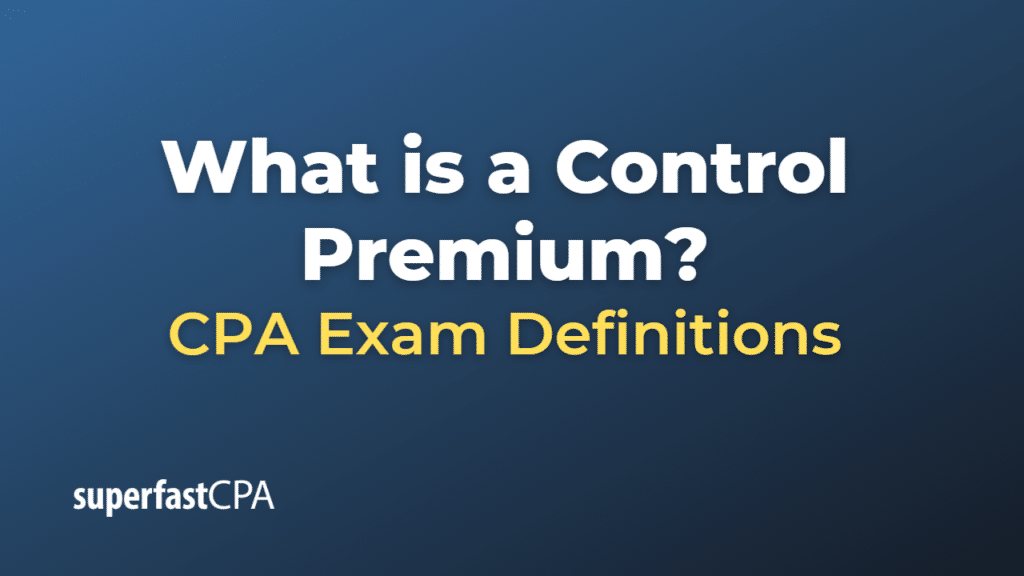Control Premium
A control premium refers to the additional amount that a buyer is willing to pay over the current market price of a publicly traded company’s shares to acquire a controlling interest in the company. This premium is usually paid when an investor or acquirer believes that they can create additional value by taking control of the company, making strategic decisions, and implementing changes in the company’s operations, management, or overall direction.
The control premium represents the value that the acquirer sees in obtaining control of the company, such as the ability to influence or change the company’s strategic direction, cost structure, capital allocation, or management team. This premium can vary significantly depending on factors such as the target company’s industry, size, financial performance, and growth prospects.
Control premiums are often observed in mergers and acquisitions (M&A) transactions, where one company acquires a controlling stake in another company. The acquirer may be willing to pay a control premium to ensure they obtain the necessary voting shares to have a decisive influence over the target company’s decisions.
It’s important to note that the control premium does not always guarantee a successful acquisition or improved performance for the acquired company. The acquirer’s ability to create value and realize the potential benefits of the control premium depends on their strategic vision, execution capabilities, and the target company’s overall potential for improvement.
Example of a Control Premium
Let’s consider a hypothetical example involving two publicly traded companies, Company A and Company B. Company A is interested in acquiring a controlling stake in Company B because it believes it can improve Company B’s operations, create synergies, and unlock additional value.
- Market price: Company B’s shares are currently trading at $20 per share in the stock market.
- Control premium: Company A believes that by taking control of Company B, it can implement significant changes that will lead to increased revenues, reduced costs, and overall improved financial performance. As a result, Company A is willing to pay a 25% control premium over the current market price of Company B’s shares.
- Acquisition price: Based on the control premium, Company A offers to buy Company B’s shares at $25 per share ($20 per share + 25% control premium). The total acquisition price depends on the number of shares that Company A intends to acquire to achieve a controlling stake.
- Post-acquisition actions: Once Company A successfully acquires a controlling stake in Company B, it begins implementing its strategic vision, which may include changes in management, operational improvements, cost-cutting measures, or pursuing new growth opportunities.
- Value creation: If Company A’s strategies and actions lead to improved financial performance for Company B, the acquisition could create value for both companies, justifying the control premium paid. However, if the anticipated improvements and synergies do not materialize, the control premium may not yield the expected returns for Company A.
In this example, Company A is willing to pay a control premium to acquire a controlling stake in Company B, believing that it can create additional value by influencing the strategic direction and operations of Company B. However, the ultimate success of the acquisition and the realization of the control premium’s potential benefits depend on Company A’s ability to execute its strategic vision and the actual potential for improvement in Company B’s performance.













